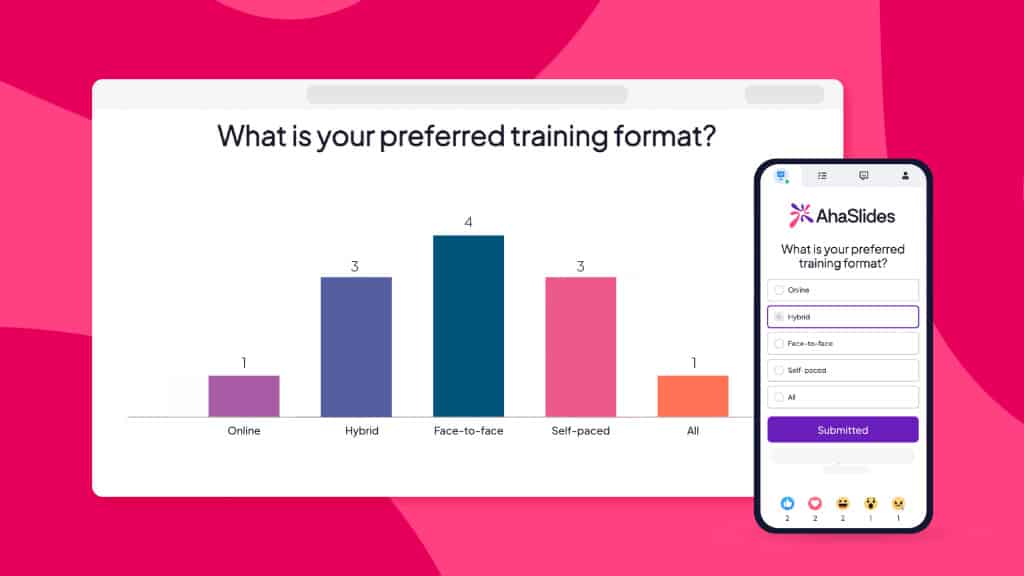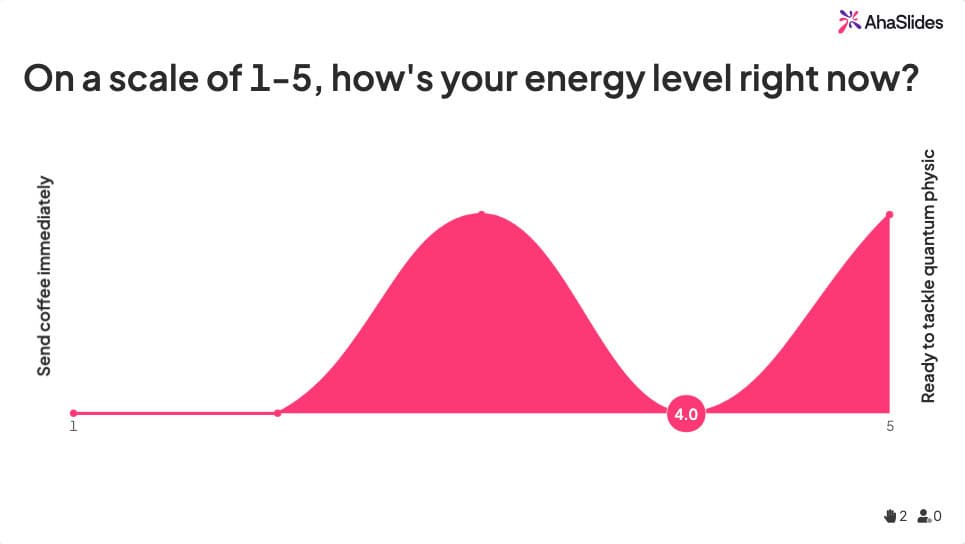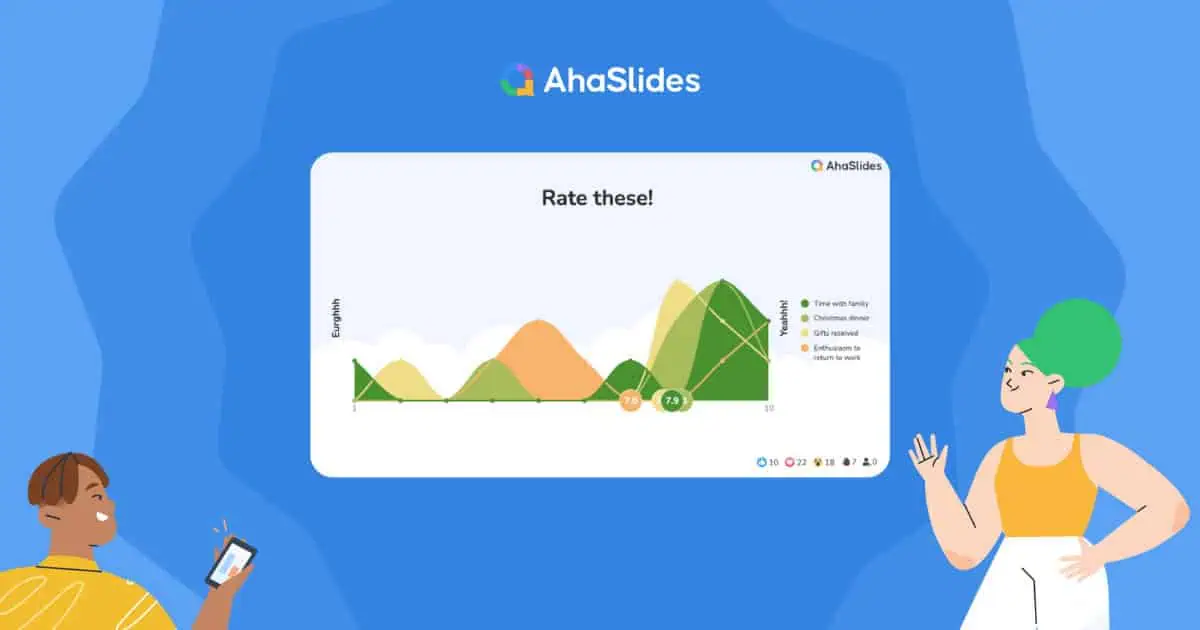Kuqoqosho lwanamhlanje oluqeqeshwe yi-TikTok, unemizuzwana esi-8 yokubamba umdla womntu-ixesha elingaphantsi kunentlanzi yegolide. Ukuba oko kuvakala kulucelomngeni kwinkcazo yemizuzu emi-5, nazi iindaba ezimnandi: iintetho ezimfutshane sisixhobo sakho esiyimfihlo.
Ngelixa abanye bezulazula kwiidekhi ze-slide ezingama-60 bebukele amehlo ekhazimla, uya kuzisa umyalezo ogxile obambekayo. Nokuba ujonge kubatyali-mali, uqeqesha iqela elikude, ubonisa iziphumo zophando, okanye udliwano-ndlebe ngendima yakho yamaphupha, ukubamba ifomathi yemizuzu emi-5 akulunganga nje—kukuchaza umsebenzi.
Esi sikhokelo sitsala inzululwazi yenkcazo-ntetho, ulwazi oluvela kubaqeqeshi abaqeqeshiweyo abanikezela amakhulu eeseshoni ngonyaka, kunye nobuchule obuqinisekisiweyo obuvela kwizithethi ze-TED ukukunceda wenze iintetho ezibandakanya, ukucenga, kunye nokushiya impembelelo engapheliyo.
Isiqulatho
Kutheni iintetho zemizuzu emi-5 zifuna indlela eyahlukileyo
Research ukusuka kwisazi se-neuroscientist uJohn Medina ubonisa ukuba ingqalelo yabaphulaphuli iyancipha kakhulu yonke imizuzu ye-10 ngexesha leentetho zemveli. Kuseto lwenyani, loo festile icutheka ibe yimizuzu emi-4 kuphela. Unikezelo lwakho lwemizuzu emi-5 luhleli ngokugqibeleleyo kule ndawo yothethathethwano-kodwa kuphela ukuba uyiyile ngokuchanekileyo.
Imiba iphezulu ngeenkcazo-ntetho ezimfutshane. Igama ngalinye libalulekile. Sonke isilayidi sibalulekile. Akukho xesha lokugcwalisa, akukho gumbi le-tangents, kwaye zero unyamezelo kwiimpazamo zobugcisa. Uphando lwemizi-mveliso lubonisa ukuba iipesenti ezingama-67 zeengcali ngoku zikhetha iinkcazo-ntetho ezimfutshane, ezigxininisiweyo kunezinde—kodwa uninzi lwabasasazi basajonga iintetho ezimfutshane njengoguqulelo olufinyeziweyo lwexesha elide, elingafane lisebenze.
Yenziwa njani iNgcaciso yemizuzu emi-5
Inyathelo 1: Khetha iSihloko sakho ngoQeqesho oluQhelekileyo

Eyona mpazamo inkulu eyenziwa ngababonisi? Ukuzama ukugubungela umhlaba omninzi. Inkcazo-ntetho yakho yemizuzu emi-5 kufuneka ilungise ingcamango enye engundoqohayi abathathu, nokuba babini. Yicinge njengelaser, hayi isibane sesikhukula.
Isihloko sakho kufuneka siphumelele olu vavanyo lunamacandelo amane:
- Indawo enye yojoliso: Ngaba ungayichaza ngesivakalisi esinye? Ukuba akunjalo, yinciphise.
- Ukufaneleka kwabaphulaphuli: Ngaba iyayicombulula ingxaki abajongene nayo? Tsiba ulwazi abasele belwazi.
- Ukulula: Ngaba ungayichaza ngaphandle kwemvelaphi entsonkothileyo? Gcina izihloko ezintsonkothileyo kwiifomathi ezinde.
- Ubungcali bakho: Namathela kwizifundo ozazi nzulu. Ixesha lokulungiselela lilinganiselwe.
Ukuphefumlelwa, qwalasela ezi zihloko eziqinisekisiweyo zemizuzu emi-5 kwiimeko ezahlukeneyo:
- Iisetingi zobungcali: Izicwangciso ezi-3 eziqhutywa yidatha zokunciphisa i-churn yabathengi, Izixhobo ze-AI zikwenza njani kwakhona ukuhamba komsebenzi wethu, Kutheni iziphumo zethu ze-Q3 zibonisa i-pivot yobuchule
- Uqeqesho & ne-L&D: Umkhwa omnye oguqula ukusebenza kweqela elikude, Ipsychology ngasemva kwamanqaku okuzibandakanya kwabasebenzi, Indlela yokunika ingxelo ephucula indlela yokuziphatha
- Iimeko zemfundo: Iziphumo eziphambili kuphando lwam lozinzo, Indlela amajelo eendaba ezentlalo akuchaphazela ngayo ukwenza izigqibo zolutsha, Ukuziphatha kokuhlelwa kofuzo kwiimeko ezintathu zokwenyani.
INyathelo 2: Yila izilayidi Ezandisayo (Aziphazamisi)
Nantsi inyani eyohlula abantu abangafundanga kwiingcali zobugcisa: ungumboniso, hayi izilayidi zakho. Izilayidi kufuneka zixhase ibali lakho, hayi endaweni yalo.
Umbuzo wokubala izilayidi
Uphando oluvela kwiingcali zenkcazo-ntetho lucebisa izilayidi ezi-5-7 kwintetho yemizuzu emi-5-malunga nesilayidi esinye ngomzuzu kunye nexesha lokuvula nokuvala kwakho. Nangona kunjalo, izithethi ze-TED ngamanye amaxesha zisebenzisa izilayidi ezingama-20 ezihamba phambili ngokukhawuleza (imizuzwana eyi-10-15 nganye) ukugcina amandla okubonwayo. Okubaluleke ngaphezu kobuninzi kukucaca kunye nenjongo.
Imigaqo yoyilo lomxholo
- Umbhalo omncinci: Ubuninzi bamagama ama-6 kwisilayidi ngasinye. Isikripthi sakho samagama angama-700 kufuneka sithethwe, singaboniswa.
- Uluhlu olubonakalayo: Sebenzisa ubungakanani, umbala, kunye nendawo emhlophe ukukhokela ingqalelo kokona kubaluleke kakhulu.
- Ukubonwa kwedatha: Istatistiki enye enyanzelisayo okanye igrafu kwisilayidi ngasinye ibetha imihlathi yengcaciso.
- Uyilo oluhambelanayo: Iifonti ezifanayo, imibala, kunye noyilo kulo lonke ixesha ligcina ubungcali.
Isiluleko sepro: Yenza intetho yakho isebenze usebenzisa ii-poll ezibukhoma, iimpawu ze-Q&A, okanye imibuzo ekhawulezayo. Oku kuguqula ababukeli abangenzi nto babe ngabathathi-nxaxheba abasebenzayo kwaye kuphucula ngokumangalisayo ukugcinwa kolwazi. Izixhobo ezinjengeAhaSlides ikuvumela ukuba ulungise ezi mpawu ngaphandle komthungo, nakwifomati zemizuzu emi-5.

Inyathelo lesi-3: Lawula ixesha ngokuChaneka koMkhosi
Kwinkcazo yemizuzu emi-5, isekhondi nganye inomsebenzi. Akukho sithintelo sokurhwashaza okanye ukuphinda ufumane iimpazamo. Izithethi eziziingcali zilandela olu lwakhiwo luvavanyiweyo lwedabi:
Ifomula yolwabiwo lwexesha eqinisekisiweyo
- 0:00-0:30 -Ukuvula ihuku: Thatha ingqalelo ngenyani eyothusayo, umbuzo oxhokonxayo, okanye ibali elinyanzelayo. Tsiba iintshayelelo ezinde.
- 0:30-1:30 – Ingxaki: Chaza isizathu sokuba abaphulaphuli bakho bafanele bakukhathalele. Ngowuphi umngeni isihloko sakho esijongene nawo?
- 1:30-4:30-Isisombululo/ingqiqo yakho: Lo ngumxholo wakho ongundoqo. Hambisa amanqaku aphambili angama-2-3 ngobungqina obuxhasayo. Sika nantoni na engabalulekanga.
- 4:30-5:00 – Isiphelo kunye nokubizelwa esenzweni: Gxininisa umyalezo wakho ophambili kwaye uxelele abaphulaphuli ukuba benze ntoni ngokulandelayo.
Uhlengahlengiso lomboniso obonakalayo
Niyazisa ukude? Yakha kumzuzu wokubandakanya rhoqo kwimizuzu emi-4 (ngophando lweMedina). Sebenzisa ii-poll, cela iimpendulo zencoko, okanye ubuze imibuzo eburheletya. Jonga i-engile yekhamera yakho (inqanaba lamehlo), qinisekisa ukukhanya okuqinileyo ukusuka ngaphambili, kwaye uvavanye umgangatho womsindo kwangaphambili. Abaphulaphuli benyani bathanda kakhulu ukuphazamiseka, ke unxibelelwano alukhethi- lubalulekile.

Inyathelo lesi-4: Hambisa ngokuzithemba okunyanisekileyo

Nkqu nesiqulatho esiqaqambileyo siwela phantsi ngonikezelo olungekho mgangathweni. Nantsi indlela iingcali ezijonga ngayo ixesha lenyaniso:
Ziqhelise njengomsebenzi wakho uxhomekeke kuwo (kuba kunokwenzeka)
Ziqhelanise nentetho yakho yemizuzu emi-5 ubuncinane amaxesha ama-5-7. Sebenzisa isibali-xesha. Zirekhode kwaye uyibukele kwakhona-ibuhlungu kodwa ixabiseke kakhulu. Ziqhelanise de ukwazi ukuhambisa umxholo wakho ngokwemvelo ngaphandle kokufunda izilayidi. Inkumbulo yezihlunu ikwenza ube novalo.
Iindlela zokuhambisa ezahlula abantu abangabaziyo kwiingcali
- Iintlobo ezahlukeneyo zezwi: Hlukanisa isantya, inowuthi kunye nevolumu. Yima ngobuchule ukuze ugxininise—ukuthi cwaka kunamandla.
- Impawu zomzimba: Ngomntu, sebenzisa izijekulo ezivulekileyo kwaye uhambe ngenjongo. Kwikhamera, nciphisa izijekulo (ziyakhulisa) kwaye ugcine unxibelelwano lwamehlo kunye nelensi.
- Ukubalisa: Weave ngokufutshane, umzekelo ofanelekileyo okanye i-anecdote. Amabali akhulisa ukugcinwa ngo-22x xa kuthelekiswa neenyani zodwa.
- Ulawulo lwamandla: Tshatisa amandla akho kumyalezo wakho. Umdla wokuphefumlela, ulinganisela izihloko ezinzulu.
- Ukulungela kobugcisa: Izixhobo zovavanyo kwimizuzu engama-30 kwangethuba. Yiba nezicwangciso zokuxhasa imiba yoqhagamshelwano.
Imfihlo yoqhagamshelwano lwabaphulaphuli
Intetho yakho yicinge njengencoko, hayi umdlalo. Gcina uqhagamshelo lwamehlo (okanye ujonge ikhamera ngemiboniso ebonakalayo). Yamkele indlela abasabela ngayo. Ukuba uyakhubeka, nqumama ngokufutshane kwaye uqhubeke—abaphulaphuli bayabuxolela ubunyani, kodwa hayi ukufunda izilayidi ngokwerobhothi.
Ingcebiso eyimfihlo: Andazi ukuba iprizenteyishini yakho yemizuzu emi-5 yenza ifuthe na? Sebenzisa a isixhobo ingxelo ukuqokelela uluvo lwabaphulaphuli ngoko nangoko. Kuthatha umgudu omncinci, kwaye uyakuphepha ukuphulukana nengxelo exabisekileyo endleleni.

Iimpazamo ezi-5 eziqhelekileyo xa unikezela nge-5-Minutes Presentation
Soyisa kwaye siziqhelanise nolingo kunye nempazamo, kodwa kulula ukunqanda iimpazamo ze-rookie ukuba uyazazi ukuba ziyintoni na👇
- Ukuhamba ngexesha: Isaziso sabaphulaphuli. Oku kubonisa ukungalungi kakuhle kwaye aluhloneli ucwangciso lwabo. Ziqhelanise nokugqiba ngo-4:45.
- Ukulayishwa ngokugqithisileyo kwezilayidi: Izilayidi ezinombhalo onzima zenza abaphulaphuli bafunde endaweni yokuphulaphula. Ulahlekelwa yingqalelo yabo ngoko nangoko.
- Ukutsiba ukuziqhelanisa: "Yimizuzu emi-5 kuphela" kukucinga okuyingozi. Iifomathi ezimfutshane zifuna OKUNYE ukuziqhelanisa, hayi ngaphantsi.
- Ukuzama ukugubungela yonke into: Ubunzulu bubetha ububanzi. Enye ingqiqo ecacileyo ehambelanayo ingcono kunamanqaku amahlanu akukho mntu uwakhumbulayo.
- Ukungahoyi abaphulaphuli bakho: Lungisa umxholo ngokweminqweno yabo, inqanaba lolwazi, kunye neemfuno. Imiboniso yegeneric ayisoze ifike.
Imizekelo yeNtshumayelo eyimizuzu emi-5
Funda le mizekelo ukuze ubone imigaqo esebenzayo:
UWilliam Kamkwamba: 'Indlela endawubamba ngayo umoya'
le TED Ingxoxo yevidiyo ibonisa ibali likaWilliam Kamkwamba, umqambi waseMalawi owathi, njengomntwana ojongene nentlupheko, wakha i-windmill yokumpompa amanzi kunye nokuvelisa umbane kwilali yakhe. Ukubaliswa kwamabali endalo kunye nokuthe ngqo kukaKamkwamba kwakwazi ukubamba abaphulaphuli, kwaye ukusetyenziswa kwakhe konqumamo olufutshane ukuze abantu bahleke ikwayenye indlela enkulu.
USusan V. Fisk: 'Ukubaluleka Kokuba Ngokufutshane'
le uqeqesho lwevidiyo inika iingcebiso eziluncedo kwizazinzulu ukuze zilungelelanise intetho yazo ukuze ihambelane nefomathi yenkcazo ye-“5 Minute Rapid”, ekwacaciswa kwimizuzu emi-5. Ukuba uceba ukwenza "Njani-u" umboniso okhawulezayo, jonga lo mzekelo.
UJonathan Bell: 'Ulenza njani igama eliKhulu leBrand'
Njengoko isihloko sicebisa, isithethi uJonathan Bell uya kukunika a Isikhokelo sinyathelo-nenyathelo kwindlela yokwenza igama lebhrendi elihlala lihleli. Ufika ngokuthe ngqo kwingongoma ngesihloko sakhe aze asiqhawule sibe ngamacandelo amancinane. Umzekelo omhle wokufunda kuwo.
I-invoyisi ye-PACE: '5 Min Pitch kwi-Startupbootcamp'
Le vidiyo ibonisa indlela I-invoyisi yePACE, i-start-up ekhethekileyo kwi-multi-currency processing processing, yakwazi ukubeka iingcamango zayo kubatyalo-mali ngokucacileyo nangokufutshane.
Ngaba uStephen: 'Indlela yokuvakala kakuhle kwi-TEDx Talk yakho'
Ukusebenzisa indlela ehlekisayo neyilayo, Ngaba uStephen uza kuthetha ngeTEDx ukhokela abantu ngezakhono zokuthetha esidlangalaleni. Kufuneka-ubukele ukwenza intetho yakho ibe ngumsebenzi wobugcisa.
Ngaba ukulungele ukwenza iinkcazo-ntetho ezibandakanya ngokwenene? Qala ngeAhaSlides'izixhobo zokubonisa ezisebenzisanayo kwaye uguqule intetho yakho elandelayo yemizuzu emi-5 ukusuka ekulibalekeni ukuya kwengalibalekiyo.








